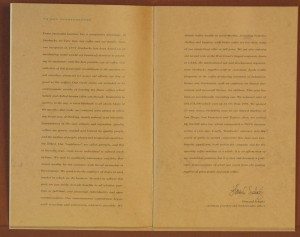
On June 26, 1992, Starbucks corporation was born. Here is your chance to browse through every page of the first annual shareholder report, in its entirety.
The very first annual meeting of shareholders was held at the Four Seasons Hotel in downtown Seattle, on Friday February 19, 1993, at 10:00 a.m. Every year, Starbucks has held annual meetings and produced annual reports. The next meeting is March 24, 2010 at McCaw Hall in Seattle. For your enjoyment, I’ve uploaded every page of the very first annual report produced by Starbucks. This precious document is not mine, rather I borrowed it from my best friend, who stumbled upon it recently as she cleaned out some boxes. Notice that in 1992, Starbucks operated a total of 154 stores.
And for a related blog entry, you can look at a few shareholder cards here:
Pages two and three of the report include a letter from Howard Schultz to the Shareholders. I’ve included it as the icon picture for this post. However, in case some are having difficulty reading it, here it is as follows:
TO OUR SHAREHOLDERS:
Every successful business has its competitive advantage. At Starbucks we have two: Our coffee and our people. Since our inception in 1971, Starbucks has been based on an unrelenting (some would say fanatical) devotion to providing its customers with the best possible cup of coffee. One indicator of this passionate commitment is the question we ask ourselves whenever we assess our efforts: are they as good as the coffee? Our retail stores are intended to be environments worthy of housing the finest coffees which nature and skilled human labor can provide. Dedication to quality, in the cup, is what Starbucks is all about. Many of the specifics that make our company seem unique to others are, to our way of thinking, simply natural, even inevitable, consequences of this core attitude and aspiration. Quality coffees are grown, roasted, brewed, by quality people, and the welfare of the people, the planet and product are inextricably linked. Our “employees” are called partners, and this is literally true, since every individual is offered stock options. We seek to seamlessly interweave variables that ensure quality for the customer with literal ownership in the company. We want to be the employer of choice in each market in which we do business. In order to achieve this goal we pay fairly, provide benefits to all whether part-time or full-time, and encourage individuality and open communication. Our environmental commitment begins with recycling and conserving wherever possible. We donate coffee locally in every market, providing homeless shelters and hospices better coffee for free than many of our competitors offer at full price. We are also entering our second year as the West Coast’s largest corporate donor to CARE, the international aid and development organization. Starbucks, together with its customers, funds CARE programs in the coffee producing countries of Indonesia, Kenya and Guatemala, with an emphasis on disease prevention and increased literacy for children. This year has been an exceptionally rewarding one. We achieved sales of $93,078,000 which were up 61.5% from 1991. We opened 53 new stores, including ones in our newest markets of San Diego, San Francisco and Denver. Also, we earned $4,104,000 after tax which represented a 70.4% increases versus a year ago. Lastly, Starbucks’ entrance into the world of publicly-owned companies this June was profoundly significant, both within the company and for the specialty coffee industry as a whole. It is an affirmation of our leadership position, but it is first and foremost a powerful demonstration of what can result from the joining together of great people and great coffee.
Howard Schultz
chairman, president, and chief executive officer
Seventeen years have gone by since this first annual shareholders’ report was published. Where are we seventeen years later? Where has Starbucks stayed true to their aspirations and where have they strayed too far? I invite constructive and civil conversation. Enjoy browsing through each and every page of this important piece of Starbucks history!
(Thank you Molly of Seattle Custom Framing for her assistance with the photography in this blog entry).

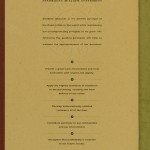
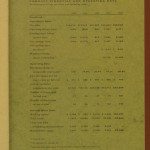
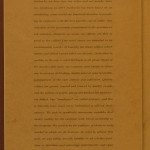
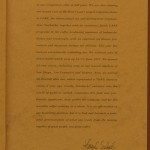
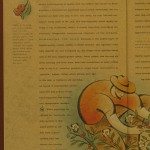
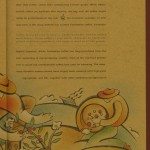
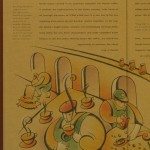
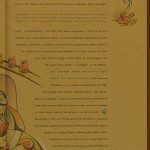
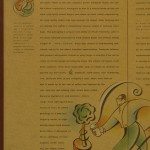
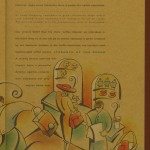
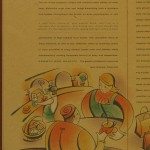
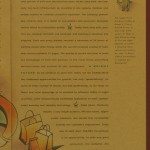
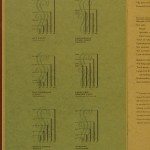
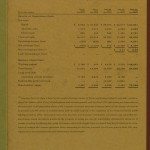
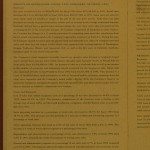
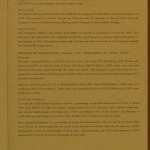
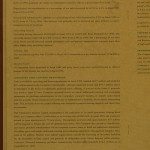
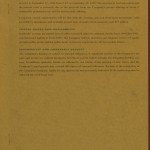
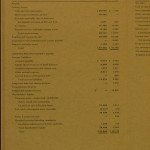
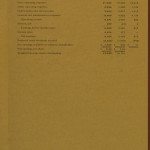

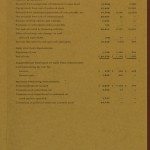
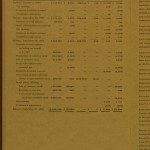
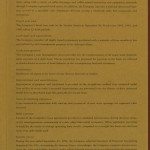
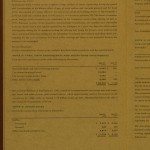
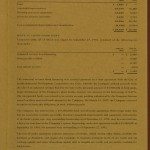
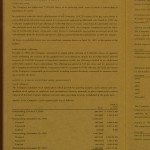
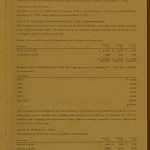
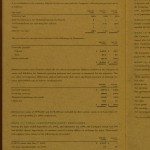
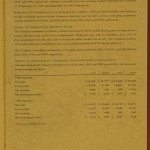

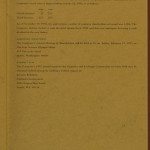
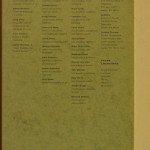

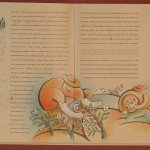
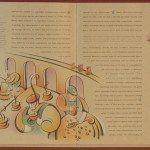
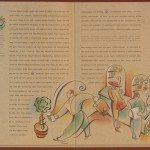
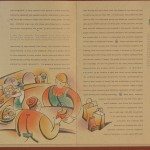
Related posts
15 Comments
Leave a Reply Cancel reply
You must be logged in to post a comment.
Sponsors
Recent Comments
- DEVIN on Compostable Straws Land in Seattle Starbucks Stores
- coffeebeanz on Why do you go to Starbucks less often? (If that’s true for you)
- Willi on You can now buy a Siren statue: $6,000
- Willi on A major revamp of your drink recipe: Testing syrup extracts and cane sugar
- Skip on Why do you go to Starbucks less often? (If that’s true for you)






The overall message in my view remains consistent. I am beginning to wonder though how SBUX will maintain the magic, maniacal focus on the things that make its core so appealing, while turning more and more to QSR features- drive-thru, sandwiches, smoothies…all change the experience, for customers and associates.
This is a very awesome sharing!!!
I need more than my blackberry to view this properly. I am seriously looking forward to reading this. What I was able to read has me curious as well how much Starbucks has adhered to its ideals – CURIOUS! 🙂
Thank you for sharing this piece of history!
1992 was the year I was introduced to Starbucks. A lot has changed over those years. I have not been happy with a lot of those changes, but the one that is most concerning to me, is the one that will be hard to turn back.
Howard said in 1992 that Starbucks had two competitive advantages, coffee and people. Decisions like PPR, etc. can be reversed or corrected. But the damage that has been done to the baristas and other partners will take a long time – if ever – to be corrected.
I hope that 2010 will be the year that Howard puts the focus back on his “partners” and gives them the attention and assistance (and respect and dignity) that they need (and deserve).
BTW – this is a very cool post – thanks for sharing.
(Reply to CD) – I love this kind of post because it is a look back and where we started, and then we think about where we are now. Though in terms of post popularity here at “Starbucks Melody”, overwhelmingly people want to comment on Dark Cherry Mocha posts (Dec 2009 – Still a top entry), sparkle donuts, and cupcakes. This kind of post is somehow less accessible. I hope people are enjoying it even if they can’t think of any replies!
I think there has been more damage done to the stores in what the role of the barista is now, than in actual food and coffee offerings. Starbucks can offer a wide variety of food and coffee and make people happen, but if they don’t empower baristas to feel great about their workplace, put enough labor on the floors so there is time for more than just an absolute bare minimum, then all they do is compromise their “competitive advantage”.
Ah well. Hopefully a few more people will join in the conversation and view this amazing piece of Starbucks history from 17 years ago. These days, there are baristas at Starbucks who haven’t lived as long as this piece of history.
I think Starbucks is facing some heavy competition in my area: Peets and Coffee Bean & Tea Leaf. Those places are all about the coffee. They smell like coffee when you walk in. Their baristas are passionate about the coffee. (Plus they have some interesting teas — real tea, not herbal tisanes.)
It doesn’t appear to be all about the coffee anymore at Starbucks, and that is a shame.
Very interesting! Thanks for all your hard work Melody 🙂
Reply to Starbucks Melody –
Starbucks AND Starbucks Melody have found the key to success in America: Sugar.
As SBUX grew, it discovered the more sugar it provided, the higher its numbers grew.
Unfortunately, they took that growth and ran away from their core instead of along side their core.
Melody, you can offer sugar and substance. And Starbucks can offer sugar and “bold.”
The key to success is to find the right balance and to never forget your core (why you started in the first place).
Melody, did any one tell u get that dark cherry mocha rolls with the next promotion? It’s actually taking a backseat ride with bold coffee being the focus.
Maybe the only thing more dated than that 1992 letter is “Pour Your Heart Into It,” which was written about a completely different company than the one we know today. They just happen to have the same name. In Howard’s “absence” (2000-2008), I think we all witnessed the shift from “Starbucks Coffee Company,” to “Starbucks Corporation,” emphasis on corporation.
The last two years partners have really been the first to get thrown under the bus in the effort to “save the company,” ironic, though, that we had to sacrifice a lot of the things that made us different.
(Reply to BayAreaBux) – Always good to see you here at this other, quieter Starbucks blog! LOL. I’ve heard about the Dark Cherry Mocha coming. I’m beaming with pride that I had the right gut intuitions in December, that this beverage would come soon to Starbucks!! (That’s why I posted the Dec 2009 blog entry here at this site, “Should Starbucks bring the Dark Cherry Mocha to the USA?”)
I was going to hold off on doing a post on the Dark Cherry until right before it launches. It seems as though everyone is talking about it now.
You’re right, about the 8 years of change, and 2 years of a bizarre transition to a one-size-fits-all coffeehouse. 🙁
I think the entire 1992 Annual Report is such a testimonial to a belief that the business is about coffee beans. The romantic colors, print, art work, and great story of Columbia Narino coffee, reinforces that it’s all about the coffee. These days, people don’t ask even if the promo art and signage reinforces that it’s a coffeehouse?
But on the plus side, I completely agree with you that emphasis on bold coffee and pour over is SUCH a great step for March 2010. Makes me very happy!
There will always be some new syrup to worry about later. It’s not Starbucks Syrup Company.
I think that is very inspirational but still very sad. Many partners do not feel as passionate about coffee. How many times, have we walked into a Starbucks with a stale cup of coffee waiting for you?
My store manager stated is more concerned about the P&L sheet than serving the freshest cup of coffee to each customer.
On a side note, has anybody else noticed that there appears to be 1-5 under roasted beans in the Pike Place Roast. When I brew each batch of coffee, I always visually inspect the spoodle and remove anything that seems amiss. So far this week, I’ve encountered over 500 under roasted beans in the Pike Place Roast. This may not seem like a big deal but I’m wondering if York is dropping the ball?
I’m still in awe what a beautiful document this is. Maybe I’m more in awe because I can feel the embossed siren on the cover, and feel the extremely heavy card stock it was printed on. I love this masterpiece, and I’ve definitely never said that about a shareholders’ report before.
I can’t believe you have this report! Thank you thank you for posting it! Do you know how rare this is? I challenge you to also find the 1993-1995 annual reports, which you simply cannot find anywhere unless you order a hard copy from the SEC archives for a hefty fee. This is golden, golden!
I just want to thank you for taking the time to post detailed scans of Starbucks Annual Report. Though I come from a different angle of appreciation than the majority of yoru fans, your post allowed me to review Starbucks early financials, something that had frustrated me for days. So again, thank you for all your hard work!
@Mike – Hi there! Glad you like this. As I kind of mention in the body of this blog entry, my best friend has been a shareholder since the IPO. These documents are hers. She found the next one – the 1993 Annual Report, and so I will put that one up too. Though to be honest the hard part is definitely finding the time to work on this blog! But I just want to let you know the 1993 Annual Report is coming too. Also, isn’t there a way you can get this information from the SEC? Just wondering.
Melody